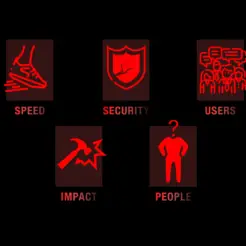Offering a great user experience (UX) is one of the most effective ways to drive engagement, increase spending, and improve customer loyalty. A cohesive, meaningful UX encourages users to form a relationship with the brand.
There isn’t anything new or even uncontroversial about this. It’s a fundamental truth that some of the greatest business leaders in history — from the Medicis to Steve Jobs — knew in a deeply intuitive way.
But not everyone has the same vision regarding UX design, and not every business leader has a firm, intuitive grasp on its utility. Even among those that do, there might not be internal consensus in an organization on how your UX vision fits within the brand’s overall strategy.
This is a common problem among UX designers, who are typically under constant pressure to demonstrate a convincing return on UX investment. Demonstrating the ROI of UX investment is a critical skill that every designer must master.
How to Make Your Case to the Executive Suite
Getting executives on-board with UX investment is not an easy task. Natural anxiety about open-ended spending tends to make executives see design expenditure as a potential money pit — and it’s your job to convince them otherwise.
Solid data from reputable sources should help make a convincing presentation, but it can be hard for UX designers to come by. It’s not common practice for organizations and enterprises to publish case studies with ROI figures on UX investment.
Nevertheless, quantifying the benefits of UX design is key to making a successful case for investment. The best way to make these estimates is by associating UX design principles to various steps in the buyer’s journey.
By mapping out the buyer’s journey — from awareness to consideration to decision — designers can point to specific UX considerations regarding reservations and concerns that customers have. To do this, designers need to distinguish between several different aspects of the UX and its effect on customers:
- Discoverability, navigation, and user-friendly interface standards all fall under usability. This typically correlates to the awareness stage, and bridges towards consideration, depending on the product or service in question.
- User interface and interaction design fall under consistency, but customer support and troubleshooting can, as well. From a UX perspective, consistency also correlates to awareness and consideration, but inconsistent design can ruin the UX anywhere along the journey map.
- User flow, efficiency, and interaction design all fall under workflow. This is where consideration turns into decision as users discover just how easy (or difficult) it is to actually use your product.
- Brand Perception. Brand perception encompasses every stage of UX, but it forms its most powerful impression at the end of the decision phase. It can be summed up by a single question — how likely is the customer to recommend your service or product to a friend?
Laying out a narrowly focused argument that supports making changes in one or more of these specific areas is a good start. When designers define points of improvement and describe them systematically, it reassures executives that they’re not coming in to sweep the board clean and change everything about the way the product or service works.
Filling Out the Journey Map
For a journey map-based UX presentation to be convincing, it has to rely on realistic, highly specific user data and behaviors. There is no such thing as a generic user in today’s design environment. It may be necessary to create multiple user personas and several journey maps for each one.
Your journey map needs to point out every interactive touchpoint between the user persona and the brand in question. The resulting narrative should be cohesive and intelligible even for someone who doesn’t know anything about the brand itself — like your pre-awareness user.
The scenarios you put your user persona through must reflect realistic goals and expectations. At the same time, they must qualify user actions, mindsets, and emotions at every stage of the journey.
When the user encounters stages that generate friction, this is your chance to make a case for specific improvements that can result in quantifiable ROI improvements. By attaching a specific figure, calculated with real data, to each improvement along the way, you can offer a nuanced introduction to the opportunities that UX design offers, in a highly convincing way.


